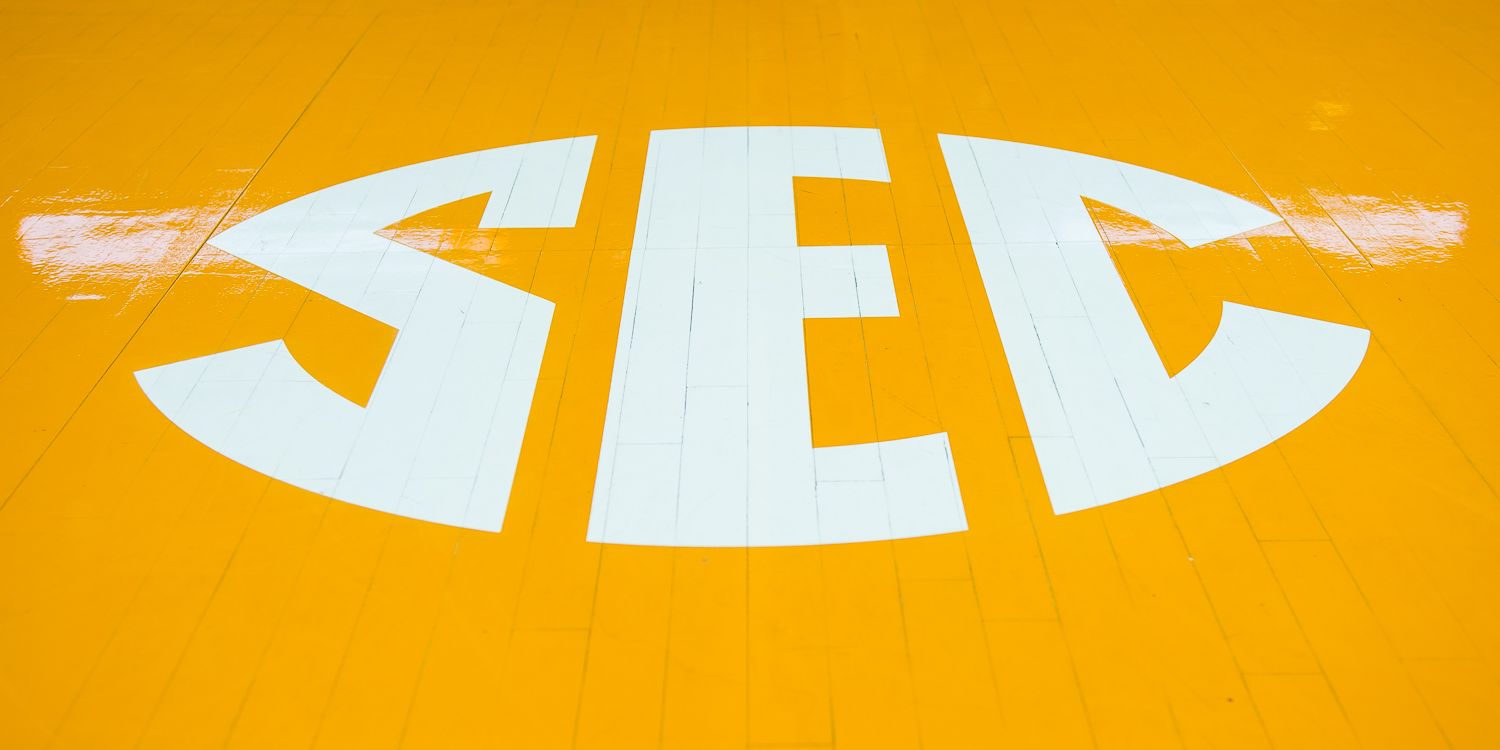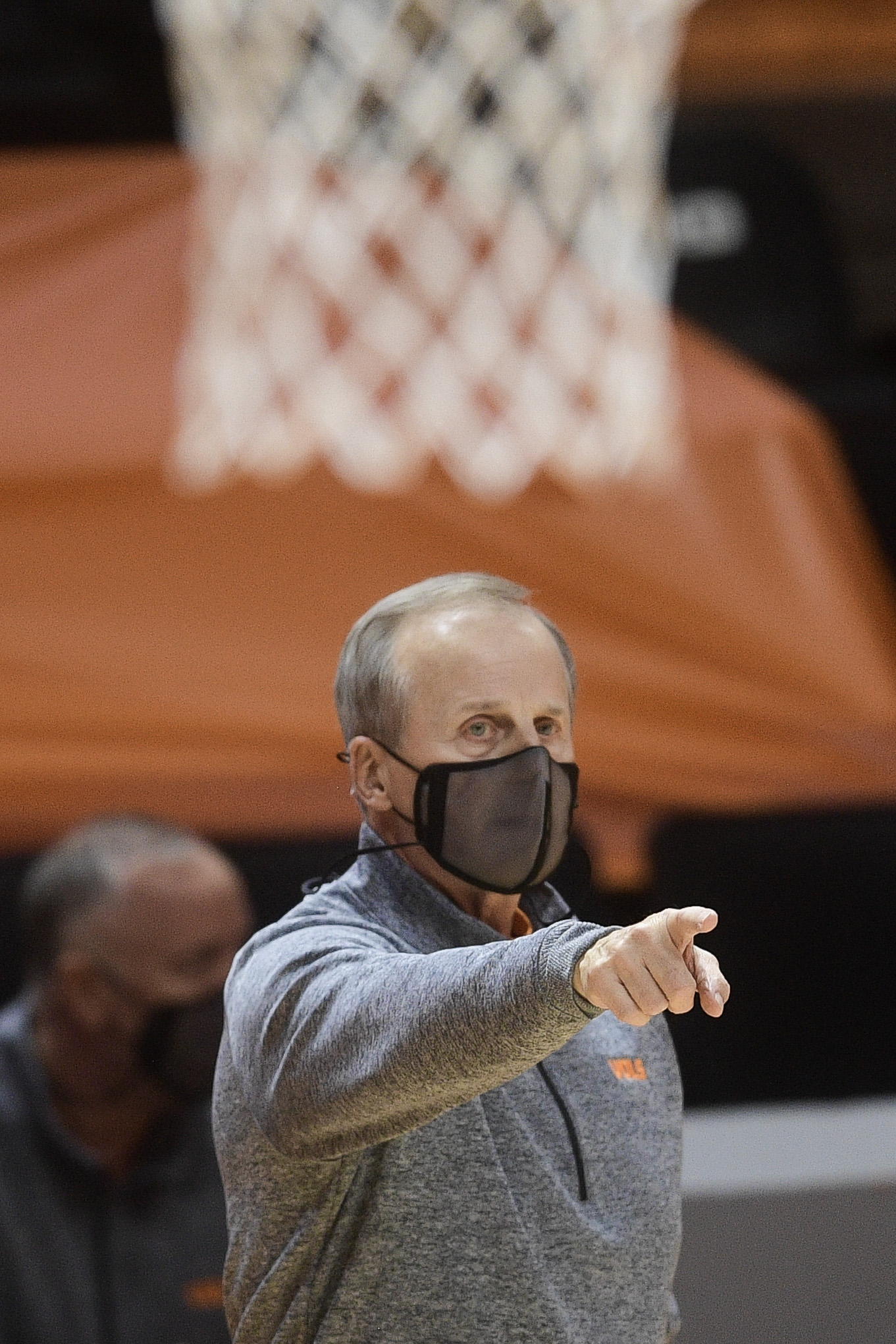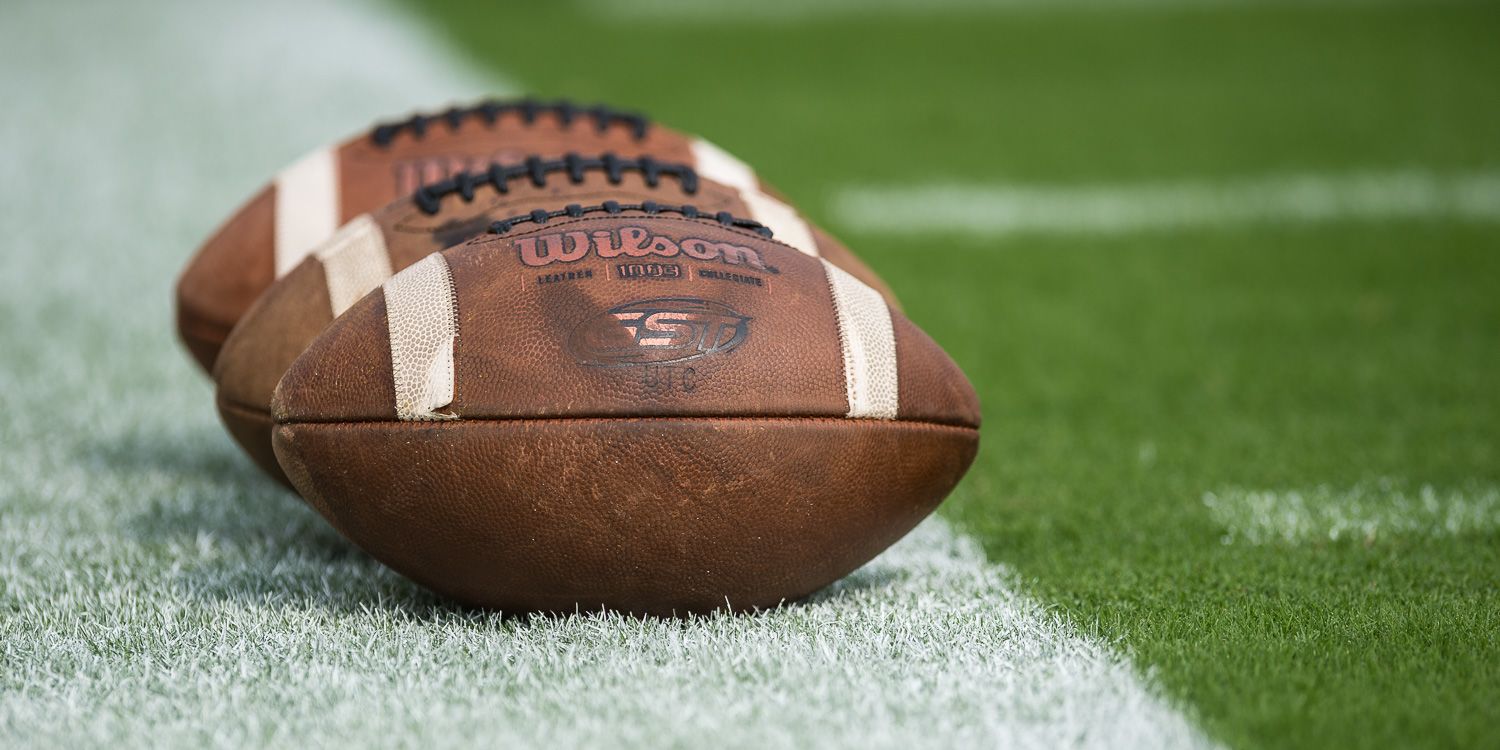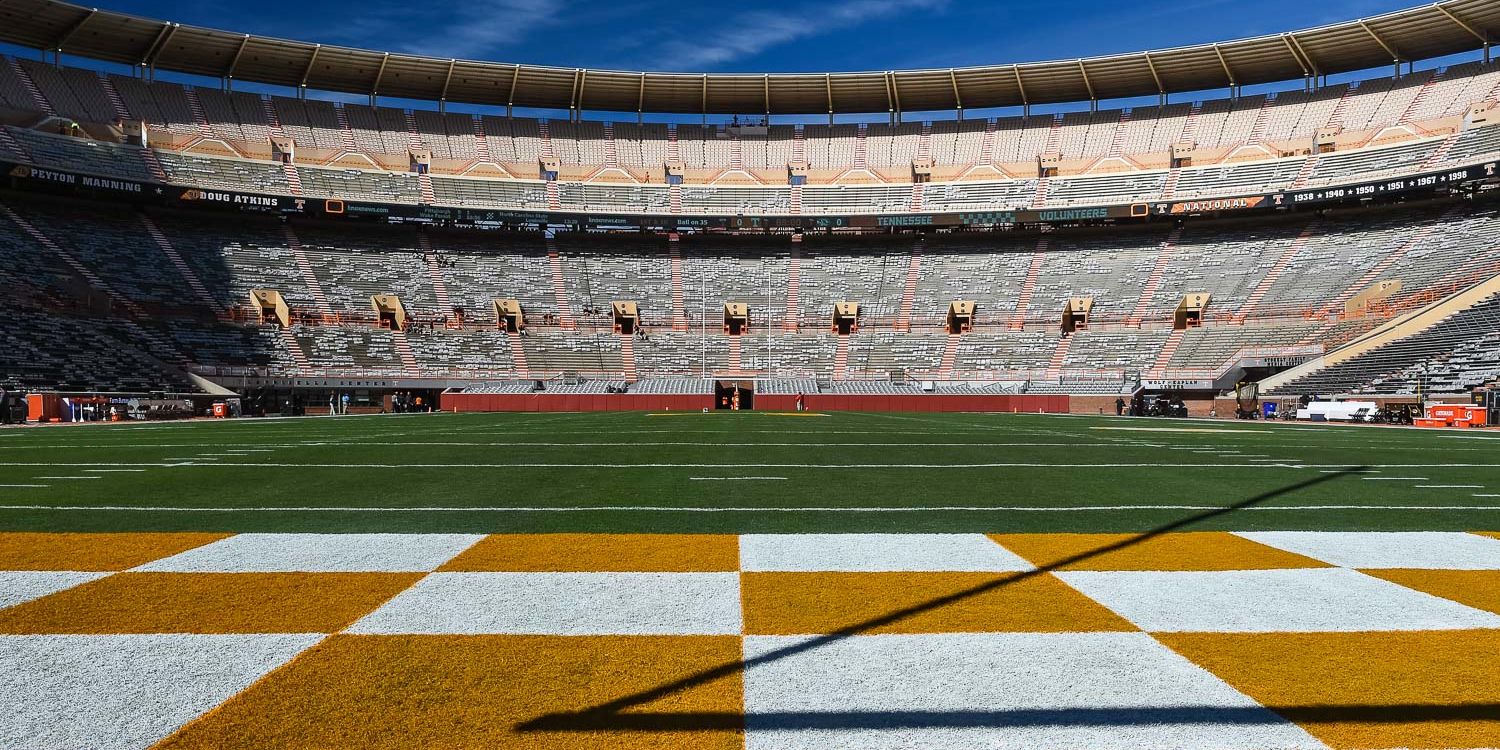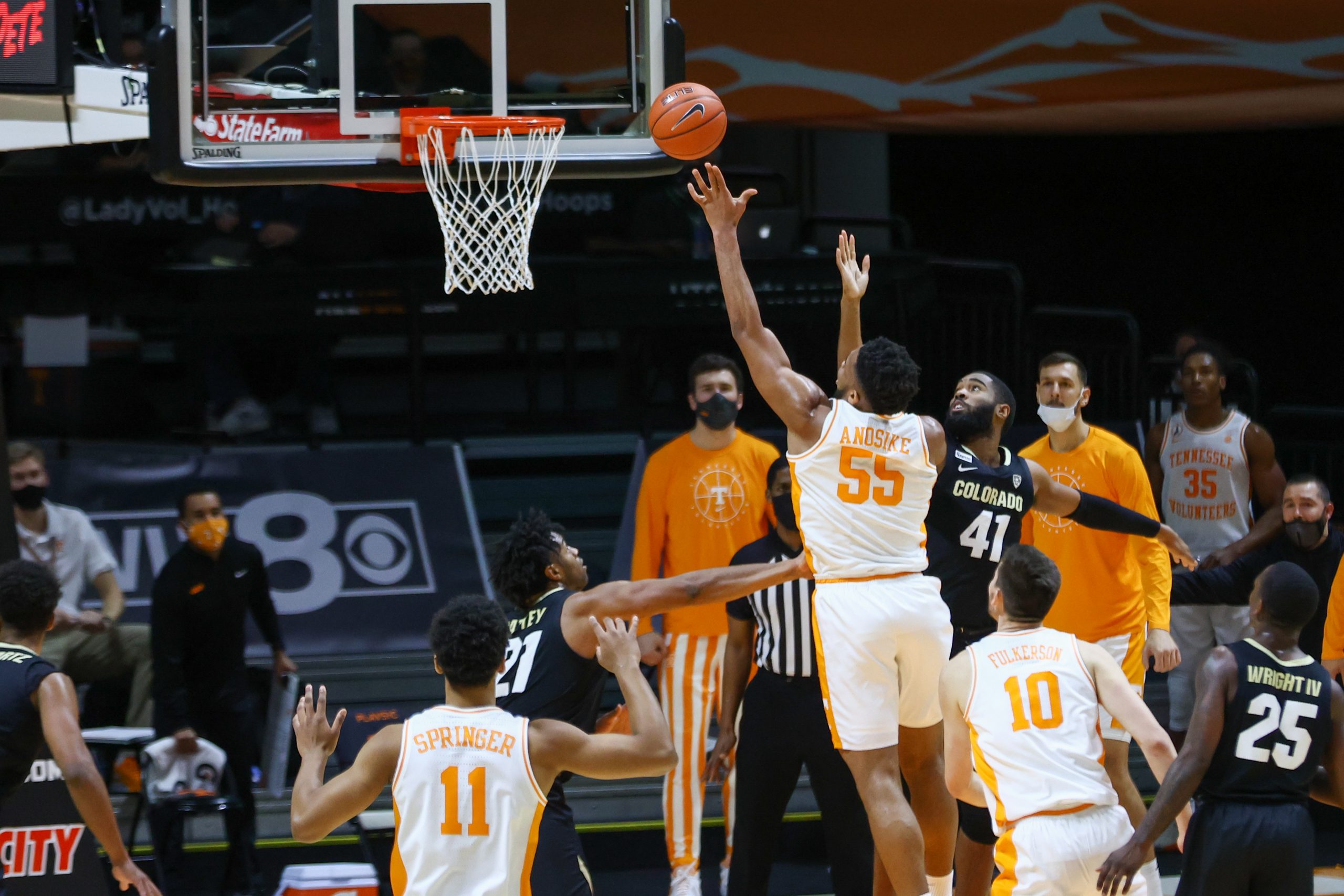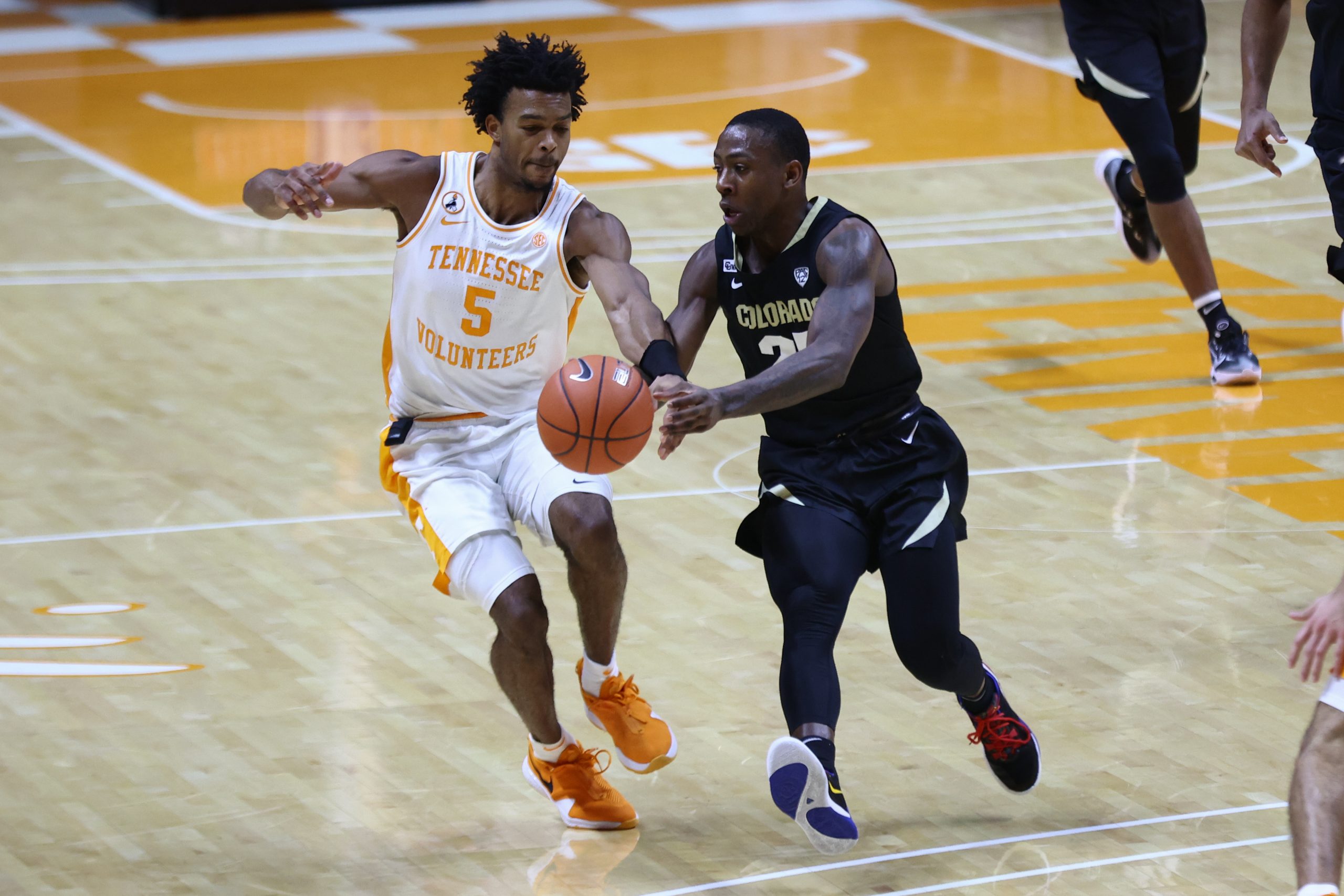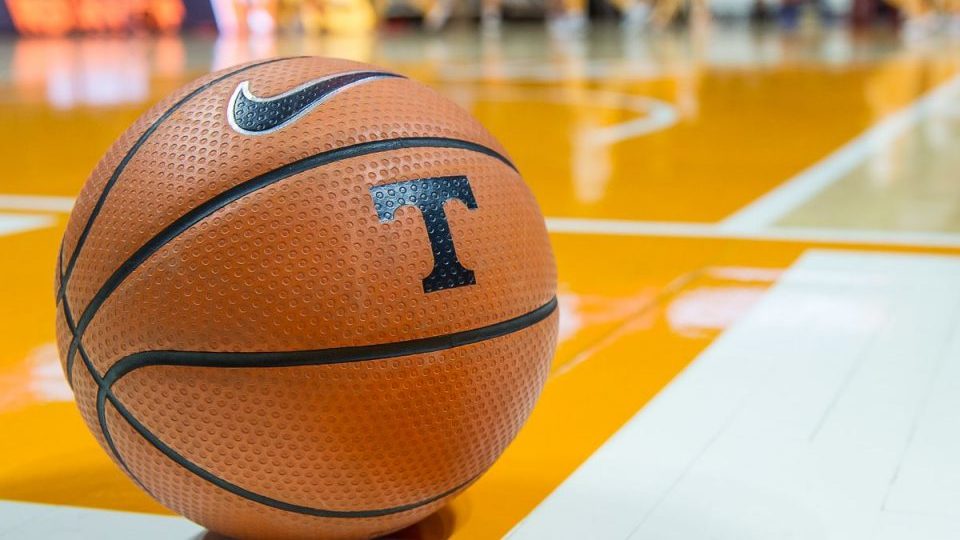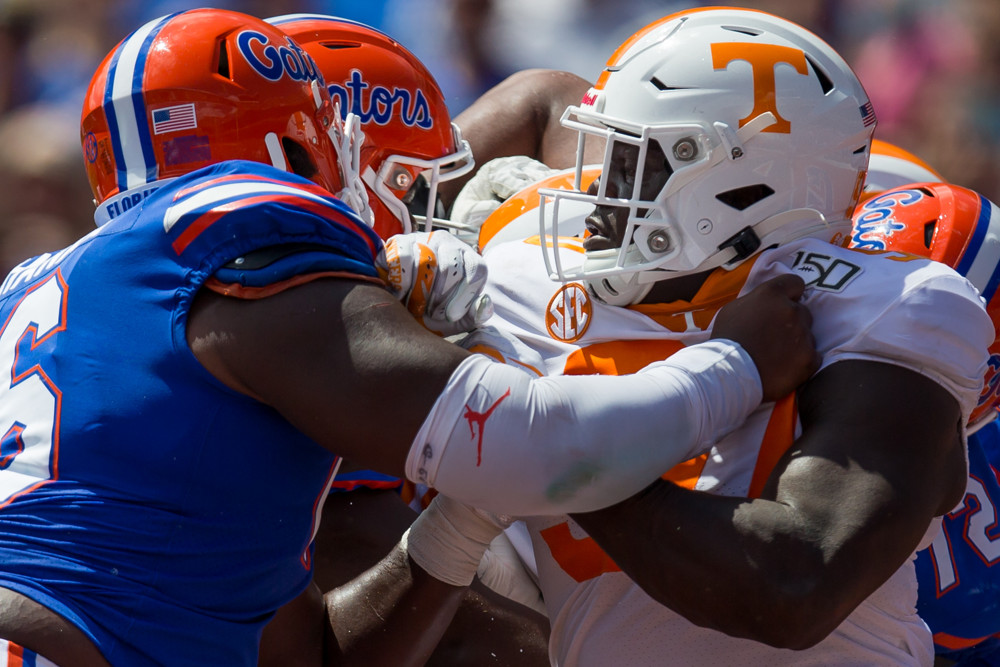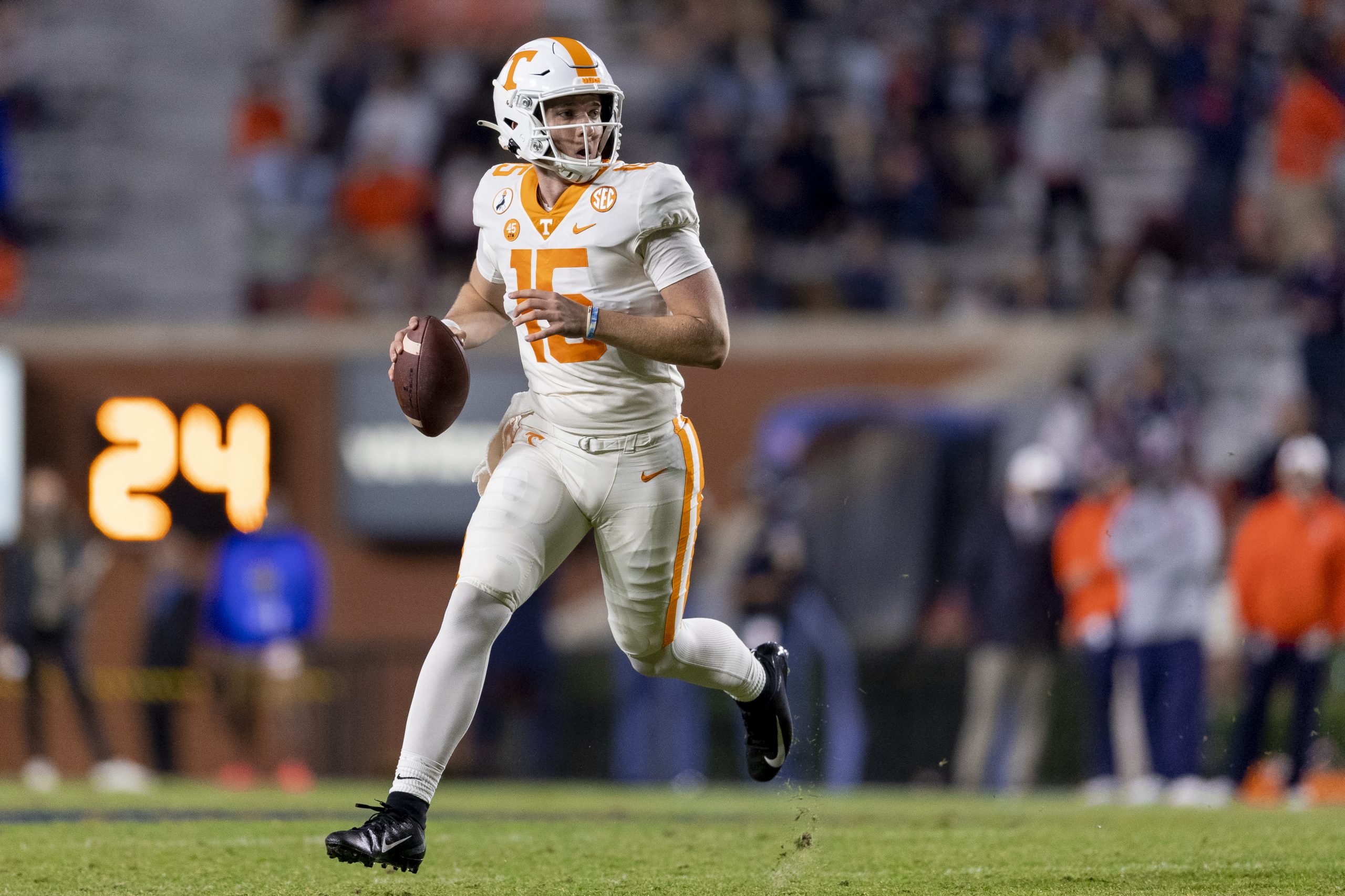Let’s say Jeremy Pruitt gets abducted by aliens tomorrow, taken to a planet that hates asparagus but loves cornbread so he can rule on high. Tennessee, forced to make a change, hires Coach McCoach. We’ve all learned to be a little unsure, but Coach McCoach turns in the following seasons in Knoxville:
- 8-5
- 10-3
- 11-3, SEC East champs
- 6-7
- 9-4
- 10-4, SEC East champs
- 5-7
After going 78-81 (.491) the last 13 years, would you take McCoach’s record of 59-33 (.641) with two division titles over the next seven seasons? Would you believe he’s the guy to lead Tennessee forward?
Because, as you might’ve noticed, those are more or less the seven seasons that got Phillip Fulmer fired from 2002-08.
(I’ve added one additional win to Fulmer’s totals in 2004 and 2005, when college football went back to playing just 11 games before fully adopting the 12-game schedule in 2006. Adding an FCS win in 2005 would’ve made the Vols bowl eligible, and I’ve given them a loss in the bowl game in keeping with the spirit of that season.)
Or maybe you’d take Gus Malzahn’s tenure at Auburn (which is now technically available): 68-35 (.660) over eight years, with two division titles plus playing for a national championship.
The problem, of course, is the rhythm of it all. Malzahn’s .660 came via a 12-2 start in that near-miss championship season of 2013, meaning his next seven seasons have gone:
- 8-5
- 7-6
- 8-5
- 10-4, SEC West champs
- 8-5
- 9-4
- 6-4
This is a version of the same thing that got Fulmer, played out over twice as many years: 91-20 (.820) in Phillip’s first nine years, then a little closer to earth in his final seven.
If you track it back to Johnny Majors’ back-to-back SEC titles a few years before Fulmer took over, the Vols have now been in the wilderness (or now exile, perhaps) just as long as we were in the promised land. Over 13 years (1989-2001), Tennessee had the best winning percentage of any SEC school (.813), with four conference titles, a national championship, and just missing a chance to play for another at the end of that cycle. And in the last 13 years, Tennessee’s .491 winning percentage ranks 11th in the SEC, better only than Arkansas, Kentucky, and Vanderbilt.
But it’s the space between – Coach McCoach’s record that got Fulmer fired – that perhaps best reflects who Tennessee historically is.
All-time, the Vols are a program that wins two-thirds of its games. Tennessee remains tenth nationally in winning percentage, dropping only one spot in these last 13 years. In today’s game (non-pandemic edition), that means you win your FCS game and go 8-4 in the others. That means 9-4 is your average year.
Believing 9-4 is your average means understanding that some years, you’re going to go 7-6. But some years, you should also go 11-2.
This, among other things, is what got Butch Jones: 9-4 in 2015 and 2016 represented his ceiling – painfully so knowing the Vols missed so many opportunities – and not his standard. When given another opportunity to see if he could continue building brick by brick, the whole thing fell down in 2017.
Those of us who remember the Decade of Dominance should all be old enough to know better by now. A healthy, fruitful goal for Tennessee isn’t to deem anything that isn’t the 90’s failure. It’s to get Tennessee to produce at the level of expectation it created for itself over 124 seasons, and see if you can take it forward from there.
And this is the question for Tennessee’s future, whether this year or next year or in any year: do you believe your head coach can move the program forward, in keeping with who your program is?
Along those lines, a thought on Tennessee’s leadership as it relates to the past, present, and future:
We should all be okay taking some responsibility for this.
When Tennessee fans effectively raised their voices and prevented Greg Schiano from becoming head coach three years ago, it was obvious such a move would come with consequences. My name is on one of those pieces from that Sunday too, and with it the understanding that such a thing would not do Tennessee any favors in the short term. And I would not change those choices, nor would the vast majority of the Tennessee fans I know.
Those choices impacted the choices Phillip Fulmer had, in a second search that reportedly focused on Jeremy Pruitt, Mel Tucker, and Kevin Steele. Tucker stayed at Georgia another year, went 5-7 at Colorado, and is now 2-4 at Michigan State. Steele might actually get the Auburn job, so perhaps he’s the biggest winner of the day.
Pruitt was a hire we appreciated at the time for the way it kept an eye on the ceiling: the Vols could’ve hired safe (so we thought at the time) in Les Miles or sentimental in Tee Martin, but took a chance on someone they believed could get Tennessee to its potential. If it turns out, whether this year or next, that Pruitt isn’t that guy, there should be some acknowledgment, spoken or unspoken, that Tennessee’s 2017 search was handcuffed from the beginning, and some of that is on us. And we wouldn’t change it. But it was certainly a factor.
Fans didn’t give Pruitt a contract extension this off-season, reported just before the first game but supposedly in the works pre-pandemic. But if it turns out Pruitt isn’t the guy…I get it. The odds were always going to be against whoever Tennessee hired at the end of that madness in 2017. We shouldn’t hold that choice only over Fulmer. There shouldn’t be a stubborn need to be right about a decision that always had a higher chance of not working out.
But we should want to ensure we’re asking the right questions about the next choice.
What’s good enough next year?
You may not like any argument to keep Jeremy Pruitt for 2021. But you should respect some of them. Just because Auburn did a crazy thing doesn’t mean it isn’t crazy. Maybe we all get an asterisk this year; God knows we could all use some grace.
But grace, of course, isn’t meant for only forgiveness and forgetting. It’s meant to help us move forward. What does moving forward look like for Tennessee and Jeremy Pruitt in 2021?
The Vols are currently sitting on a class with a 47.6% blue chip ratio; recruiting continues to be the lead dog in the pro-Pruitt argument, even in turbulent times this season. If Tennessee looks at its talent and looks at the virus, and decides it’s worth finding out what happens to run it back next year, what will we need to see to believe Pruitt can move the program forward?
In this regard, our situation is most similar to 2011-12. After some initial promise, Derek Dooley’s Vols found themselves on the business end of bad losses: 31 points to #1 LSU, 31 points to #2 Alabama, 42 points to #8 Arkansas. Quarterback was also the biggest issue, that time due to injury (cue Dooley’s, “He’s got a broken thumb!”). We spent a lot of time arguing about the argument itself: is it reasonable to judge Dooley based on what he can do without Tyler Bray and Justin Hunter against Top 10 teams in year two? Shouldn’t we be focusing on the more problematic issues in the program he inherited?
Then Tennessee lost to Kentucky, and all hell broke loose.
In tracing where it all went wrong in these last 13 years, there are really only a few Saturdays that could have significantly changed Tennessee’s course. I can’t point to any that would’ve kept Lane Kiffin from leaving for USC. The snowball got so big in 2008, I think you’d need more than one of them to go differently for Fulmer to have kept his job then. And Jeremy Pruitt, though he has a pair of ranked wins in year one and an eight-game winning streak more recently, doesn’t have one close game that could’ve swung things by itself.
But three times in the last 13 (plus one) years, Tennessee’s story ultimately shifted on a single Saturday:
- In 2007, the Vols led LSU 14-13 with ten minutes to play in the SEC Championship Game. Tennessee’s last three drives ended with a pick six, a 4th-and-4 stop at the LSU 21, and an interception from the LSU 15. Win that game, and Tennessee wins the SEC for the first time in nine years, then goes to the Sugar Bowl to play Hawaii. Coming off that kind of hardware, Fulmer would’ve surely been back in 2009 even if 2008 played out exactly the same way.
- At Kentucky in 2011, Tennessee’s loss was followed by defensive coordinator Justin Wilcox leaving for the same position at Washington after turning down Texas the year before. Dooley replaced Wilcox with Sal Sunseri…more on that in a moment.
- There are so many close games with Butch Jones, but none as damaging as 2015 at Florida, where any one of so many plays going differently would’ve put the Vols in Atlanta, and more easily allowed the momentum he built up to that point in recruiting and overall to continue. Winning the only division title since 2007 may have changed a number of things about the Butch Jones conversation before we got to 2017.
In Atlanta in 2007 and falling just short of there in 2015, it certainly felt like a missed opportunity, but we believed there would be more to come. But when Dooley lost to Kentucky, even before Wilcox left, we knew there would only be one more chance.
If he stays, I don’t know if Jeremy Pruitt will face or create turnover among his coordinators. I do know he’ll need to win.
There’s actually some comforting news from Tennessee’s history here: in 2012, Dooley’s Vols were clearly better, jumping from 6.9 to 15.1 in SP+. They had a chance to win almost every Saturday, a benchmark we thought would be useful for the 2020 Vols. Tennessee took a 20-13 lead on #18 Florida midway through the third quarter, then snuffed out a fake punt. But the Gators scored 24 points in the final 18 minutes, a sign of things to come.
The Vols lost to #5 Georgia by seven, to #19 Mississippi State by 10, and to #1 Alabama by 31 again. By the time they lost to #17 South Carolina by three, almost all of us were out; the Vols added a four overtime loss to Missouri two weeks later to seal it.
In 2012, the Vols were much closer. But, for Dave Hart and the powers that be, it wasn’t close enough: Dooley was fired. Just being better wasn’t good enough, nor should it have been. And I believe that same standard would be applicable in 2021.
It could play out in similar fashion. Our power five opponent is a little lower on the totem pole – NC State then, Pittsburgh next year – and the Vols catch a school from Mississippi in the SEC West rotation. It’s a good opportunity for Tennessee to get to its standard; one thing about finishing 9-4 is, if you get there via a 9-3 regular season, it’d be the first one here since 2007. And if Pruitt does that, he’ll earn the opportunity to see if it is indeed closer to his standard or his ceiling going forward.
On Hugh Freeze, Good Fits, and Good Timing
If Pruitt stays at Tennessee and Freeze stays at Liberty, the best comparison here isn’t Jon Gruden. It’s Bruce Pearl.
Six years ago, Cuonzo Martin brought back a significant amount of talent after a pair of frustrating finishes. And every time the Vols lost, a significant percentage of our fanbase turned their eyes to Pearl.
He loved Tennessee. He wanted to be here. His resume was obviously superior. He could take us farther than anyone else.
And he had run afoul of the NCAA.
That basketball season reached a point where some were out on Cuonzo even when Cuonzo still had a realistic opportunity to move the program forward. And he almost did, coming within a bad call of the Elite Eight. But it’s not just the missed opportunity to enjoy something good happening to Tennessee, a sad route only for those who choose it. It’s the, “Only he can fix it,” belief, which is seductive and dangerous for all of us.
I don’t know Hugh Freeze or any of the names in this post personally. I’ve always been and remain a Tennessee fan observing from the outside. If his personal life is in a better place than it was when he left Ole Miss, that’s great news.
What about the issues that led to the NCAA vacating 27 of his wins? Is that going to be different in Knoxville?
Here’s the thing about, “Only he can fix it”: we already know that’s not true.
After Pearl and Cuonzo and a brief detour through Donnie Tyndall, Rick Barnes came to Tennessee.
Bruce Pearl is still a great coach. He got Auburn to the Final Four. Auburn is also currently ineligible for the NCAA Tournament.
Rick Barnes is still chasing Tennessee’s first Final Four. But in recruiting, in weeks at number one, and against Kentucky, Barnes hasn’t just reached Pearl’s ceiling in Knoxville. He raised it.
Hugh Freeze is still a great coach. Maybe he could come to Tennessee, run a clean program, and achieve continued greatness here. But it would be a bad idea to believe he’s the only one who could.
In fact, sometimes the timing actually does work in your favor – again, see Barnes – and in this case, some other names with natural ties to Tennessee might still be available for the Vols next year, if Pruitt doesn’t work out. Billy Napier, a Cookeville native, is 7-7, 10-3, and currently 9-1 at Louisiana. He’ll play Jamey Chadwell, a Campbell County native, on Saturday for the Sun Belt title. Napier, with both mid-major success and power five assistant experience, has a more proven resume right now than Derek Dooley or Jeremy Pruitt on the day they were hired, and I’d argue with you about it being better than Lane Kiffin and Butch Jones too.
There are never guarantees:
For every coach who turned mid-to-low-major success into major success – Matt Campbell, James Franklin, Dan Mullen – there are coaches who aced level one but struggled with level two: Scott Frost, Justin Fuente, Charlie Strong. You never know. Maybe you stay the course and a year from now, we’ve got much more data on Chadwell. Maybe Napier is still available and still a good idea. Maybe we’ll want to try Auburn’s past in Malzahn, or maybe they’ll make Kevin Steele sound like such a good idea Fulmer will go that route.
Maybe it actually will be Freeze, whether his biggest questions are answered or not.
And, after this crazy year, maybe the answer could still be Jeremy Pruitt.
Once more, #opportunityisnowhere, and you can Rorschach that thing to death. I think that’s always the most important work: how do we understand success at Tennessee right now? And who/what do we believe is the best path forward?
Go Vols.
